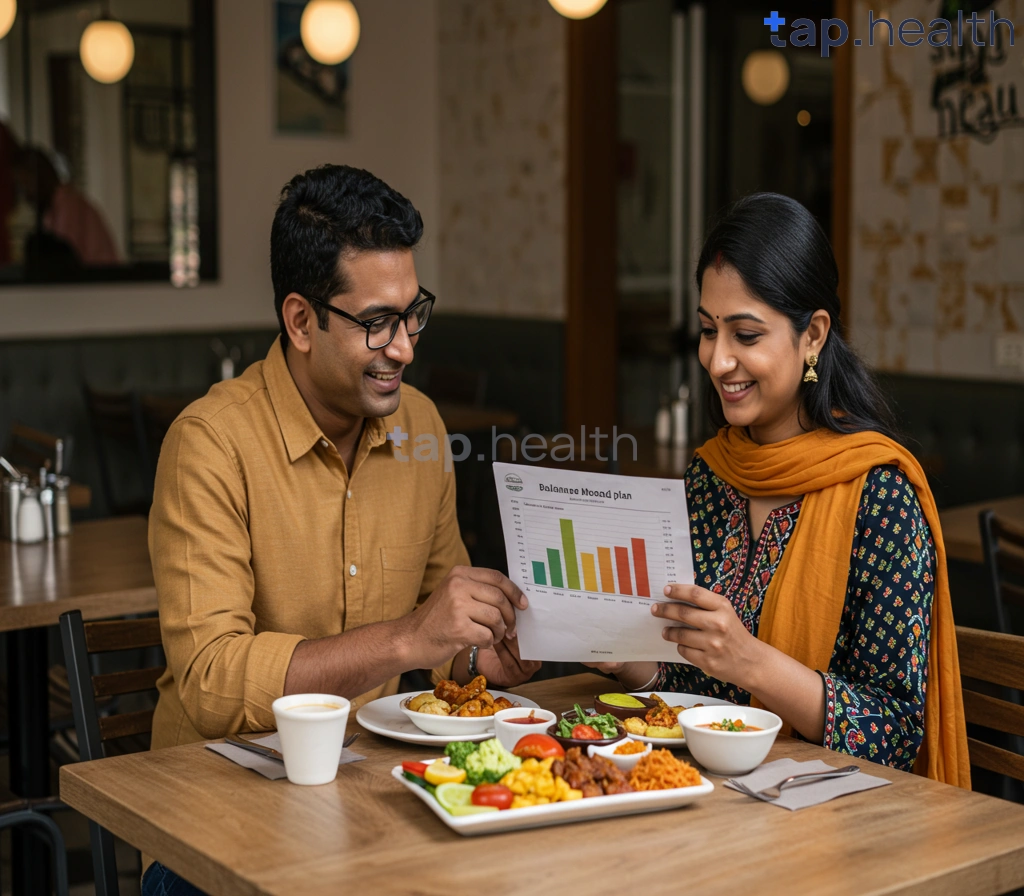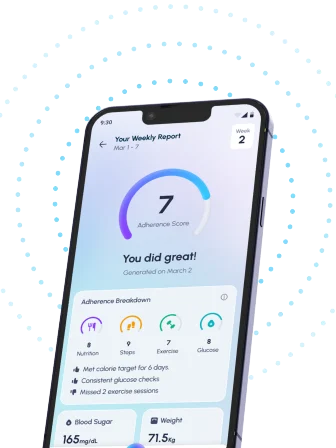Table of Contents
- High VLDL Cholesterol & Diabetes: A Risky Combination?
- Understanding the Link Between High VLDL and Diabetes
- Managing High VLDL Cholesterol with Diabetes: A Practical Guide
- High VLDL Cholesterol: Diabetes Risks and Prevention Strategies
- Lowering Triglycerides and VLDL for Better Diabetes Management
- Frequently Asked Questions
- References
Living with diabetes often means navigating a complex landscape of health concerns, and one often overlooked factor is cholesterol. While you might be familiar with LDL (“bad”) cholesterol, understanding High VLDL Cholesterol and Diabetes: Understanding the Risks is crucial for managing your overall health. Elevated VLDL cholesterol, a type of fat in your blood, significantly increases your risk of heart disease—a major complication for many with diabetes. This blog post will break down the connection between high VLDL cholesterol and diabetes, explaining why it’s so important to monitor your levels and discuss strategies for managing this often-silent threat. Let’s explore how you can proactively protect your heart health.
High VLDL Cholesterol & Diabetes: A Risky Combination?
The alarming reality is that individuals with diabetes face a significantly increased risk of cardiovascular disease. Research shows that smokers with diabetes experience double the mortality rate from cardiovascular issues compared to non-smokers. This underscores the critical importance of managing both conditions effectively, particularly focusing on cholesterol levels. High VLDL cholesterol, a type of “bad” cholesterol, significantly contributes to this risk, especially prevalent in populations across Indian and tropical countries.
Understanding the Link Between High VLDL and Diabetes
Diabetes often leads to metabolic imbalances that affect lipid profiles, including elevated VLDL levels. High VLDL cholesterol contributes to the formation of plaque in arteries, leading to atherosclerosis and increasing the chances of heart attacks, strokes, and peripheral artery disease. This is further complicated in regions like India and other tropical countries where dietary habits and lifestyle factors can exacerbate the problem. Factors such as a high intake of saturated and trans fats, limited physical activity, and genetic predispositions all contribute to higher rates of both diabetes and high VLDL cholesterol.
Taking Control: Actionable Steps for South Asian Populations
Managing both diabetes and high VLDL cholesterol requires a multi-faceted approach. This includes adopting a healthy diet emphasizing fruits, vegetables, and whole grains; reducing saturated and trans fats; increasing physical activity; and maintaining a healthy weight. Regular checkups with your doctor are essential for monitoring blood sugar and cholesterol levels and adjusting treatment plans as needed. Furthermore, quitting smoking is crucial, given its significant impact on cardiovascular health in diabetic individuals. By taking proactive steps, individuals in India and tropical regions can significantly reduce their risk of serious cardiovascular complications associated with high VLDL cholesterol and diabetes. For more information on managing cholesterol levels with diabetes, see our article on How to Manage Cholesterol Levels with Diabetes?. Understanding LDL Cholesterol Levels is also crucial in overall cholesterol management.
Understanding the Link Between High VLDL and Diabetes
High VLDL cholesterol and diabetes share a concerningly close relationship, particularly in regions like India and other tropical countries. This isn’t just a correlation; it’s a significant risk factor contributing to serious health complications. VLDL (very-low-density lipoprotein) is a type of fat in your blood, and elevated levels are strongly associated with increased risk of developing type 2 diabetes and cardiovascular disease. The link is complex, but it’s understood that high VLDL can contribute to insulin resistance, a key characteristic of diabetes. Insulin resistance means your body doesn’t use insulin effectively, leading to a buildup of sugar in the blood. Understanding the connection between high VLDL and diabetes is crucial, and it’s also important to consider the relationship between diabetes and other metabolic issues, such as those explored in The Link Between Diabetes and Fatty Liver.
The Indian Context and Hypertension
The connection between high VLDL, diabetes, and other metabolic disorders is particularly relevant in India. The alarming statistic that over 60% of people with diabetes in India also have hypertension highlights the gravity of this issue. This co-occurrence underscores the importance of proactive management of lipid profiles, including VLDL levels, for individuals in India and other tropical regions. Lifestyle factors prevalent in many parts of these regions, such as dietary habits and physical activity levels, can significantly influence VLDL levels and contribute to the high prevalence of both diabetes and hypertension. The link between obesity and diabetes is another critical factor to consider, as highlighted in Understanding the Link Between Diabetes and Obesity.
Managing VLDL and Diabetes Risks
Reducing your risk of high VLDL and its complications requires a multi-pronged approach. This includes adopting a healthy diet low in saturated and trans fats, increasing regular physical activity, and maintaining a healthy weight. Regular check-ups with your doctor, including blood lipid profile tests, are crucial for early detection and management. For individuals with diabetes in India and similar regions, proactively addressing high VLDL levels is paramount to preventing serious cardiovascular complications and improving overall health outcomes. Consult your doctor to discuss your specific risk factors and develop a personalized management plan.
Managing High VLDL Cholesterol with Diabetes: A Practical Guide
High VLDL cholesterol significantly increases the risk of heart disease, a serious concern for individuals with diabetes, especially prevalent in Indian and tropical countries. Managing this requires a multi-pronged approach beyond just medication. Understanding your specific risk factors is crucial. For people with diabetes, maintaining blood pressure below 140/90 mmHg, or ideally below 130/80 mmHg as some guidelines suggest, is vital in preventing further complications.
Dietary Adjustments for Lower VLDL
Dietary changes are fundamental. Focus on a diet rich in fruits, vegetables, and whole grains, limiting saturated and trans fats commonly found in processed foods and fried snacks popular in many Indian and tropical cuisines. Increase your intake of omega-3 fatty acids found in fish like salmon or plant-based sources like flaxseeds. Regular monitoring of your blood sugar and blood pressure levels is essential, ensuring adherence to your doctor’s recommended levels. For more comprehensive tips on diabetes management, check out our guide: 10 Proven Tips for Effective Diabetes Management.
Lifestyle Modifications: Key to Success
Beyond diet, regular physical activity is paramount. Aim for at least 150 minutes of moderate-intensity exercise per week, incorporating activities suitable for the tropical climate, such as early morning or evening walks. Managing stress through techniques like yoga or meditation is equally important as stress can negatively impact blood sugar and cholesterol levels. Regular check-ups with your doctor and a registered dietitian are crucial for personalized guidance and monitoring progress. As you age, managing diabetes can present unique challenges. Learn more in our article: Managing Diabetes as You Age: Challenges and Solutions.
Seeking Expert Advice in India and Tropical Regions
In India and other tropical countries, access to quality healthcare may vary. It’s essential to seek guidance from qualified healthcare professionals familiar with the specific dietary habits and lifestyle factors prevalent in your region. Don’t hesitate to discuss your concerns and collaboratively create a manageable plan. Remember, proactive management is key to preventing serious health complications associated with high VLDL cholesterol and diabetes.
High VLDL Cholesterol: Diabetes Risks and Prevention Strategies
High levels of very-low-density lipoprotein (VLDL) cholesterol are a significant concern, especially in individuals with diabetes prevalent in Indian and tropical countries. Studies show a strong correlation between elevated VLDL and increased risk of diabetic complications. In fact, over 30% of diabetes patients report HbA1c levels above 9%, highlighting the severity of uncontrolled blood sugar and its link to lipid abnormalities like high VLDL. This underscores the importance of proactive management for those living with diabetes in these regions.
Understanding the Link Between High VLDL and Diabetes
High VLDL cholesterol contributes to insulin resistance, a hallmark of type 2 diabetes. When the body struggles to utilize insulin effectively, blood sugar levels remain elevated, leading to a cascade of health problems. High VLDL, often accompanied by high triglycerides, further exacerbates this issue, increasing the risk of heart disease, stroke, and other diabetes-related complications common in Indian and tropical populations. Lifestyle factors prevalent in these regions, such as dietary habits high in saturated and trans fats, and a less active lifestyle, significantly contribute to this problem. For more information on managing triglyceride levels, which are often elevated alongside VLDL, see our article on Nutritional Strategies for Lowering Triglycerides.
Prevention and Management Strategies
Managing VLDL levels is crucial for individuals with diabetes, particularly in high-risk populations. This involves adopting a heart-healthy diet rich in fruits, vegetables, whole grains, and lean protein, while limiting saturated and trans fats, refined carbohydrates, and sugary drinks. Regular physical activity is essential, aiming for at least 150 minutes of moderate-intensity exercise per week. Regular monitoring of blood sugar and lipid profiles is vital. Consult with your physician or a registered dietitian to create a personalized plan tailored to your needs and cultural context. Considering the prevalence of diabetes and associated cardiovascular risks in Indian and tropical countries, proactive management is of paramount importance. Seek professional guidance to effectively manage your VLDL cholesterol and prevent serious health complications.
Lowering Triglycerides and VLDL for Better Diabetes Management
High levels of very-low-density lipoprotein (VLDL) cholesterol are a significant concern, especially for individuals with diabetes, particularly prevalent in India and other tropical countries. VLDL is a type of fat in your blood, and high levels contribute to increased triglycerides, a major risk factor for heart disease, which disproportionately affects people with diabetes. Considering that over 75% of people with diabetes live in low- and middle-income countries, addressing this issue is crucial for global health.
Understanding the Link Between VLDL, Triglycerides, and Diabetes
Elevated VLDL cholesterol and high triglycerides often go hand-in-hand, exacerbating the complications associated with diabetes. Poorly controlled blood sugar levels can lead to increased triglyceride production in the liver, directly impacting VLDL levels. This, in turn, increases the risk of cardiovascular events, including heart attacks and strokes. In many tropical regions, including parts of India, dietary habits and lifestyles contribute significantly to these elevated lipid levels.
Practical Steps for Lowering VLDL and Triglycerides
Managing diabetes effectively is paramount. This includes maintaining a healthy weight, regular exercise, and adhering to a prescribed medication regime. Dietary changes are equally important. Focus on reducing saturated and trans fats, increasing your intake of fiber-rich foods, and choosing lean protein sources. Incorporating traditional, regionally-appropriate foods rich in omega-3 fatty acids can offer additional benefits. Regular check-ups with your doctor are vital for monitoring progress and making necessary adjustments to your treatment plan. For more specific strategies on how to decrease triglycerides, consider exploring additional resources.
Taking Control of Your Health
Lowering VLDL and triglycerides is crucial for preventing serious health complications in individuals with diabetes. By adopting a holistic approach that incorporates healthy eating, regular physical activity, and medical supervision, individuals in India and other tropical countries can significantly reduce their risk of cardiovascular disease and improve their overall quality of life. Consult your doctor or a registered dietitian to create a personalized plan tailored to your specific needs and cultural context. Remember to discuss any potential use of safe and effective dietary supplements for diabetes care with your healthcare provider.
Frequently Asked Questions
Q1. What is the link between high VLDL cholesterol and cardiovascular disease in diabetics?
High VLDL cholesterol significantly raises the risk of cardiovascular disease in people with diabetes, especially in tropical regions like India. High VLDL contributes to plaque buildup in arteries, increasing the chance of heart attacks and strokes.
Q2. What lifestyle factors worsen high VLDL cholesterol risk in diabetics?
Diets high in saturated and trans fats, lack of physical activity, and genetic predisposition all increase the risk. Smoking also significantly worsens the risk.
Q3. How can I effectively manage high VLDL cholesterol if I have diabetes?
Effective management involves a multi-pronged approach: a healthy diet rich in fruits, vegetables, and whole grains; reducing saturated and trans fats; increasing physical activity; managing weight; regular checkups; and quitting smoking.
Q4. What are the potential consequences of ignoring high VLDL cholesterol with diabetes?
Ignoring high VLDL cholesterol can lead to serious cardiovascular complications, such as heart attacks and strokes, due to the increased plaque formation in the arteries.
Q5. Besides VLDL, are there other important factors to consider when managing cardiovascular risk with diabetes?:
Yes, managing high triglyceride levels, often linked with high VLDL, is also crucial for reducing cardiovascular risk in individuals with diabetes.
References
- Electronic Health Records-Based Data-Driven Diabetes Knowledge Unveiling and Risk Prognosis : https://arxiv.org/pdf/2412.03961
- A Practical Guide to Integrated Type 2 Diabetes Care: https://www.hse.ie/eng/services/list/2/primarycare/east-coast-diabetes-service/management-of-type-2-diabetes/diabetes-and-pregnancy/icgp-guide-to-integrated-type-2.pdf




